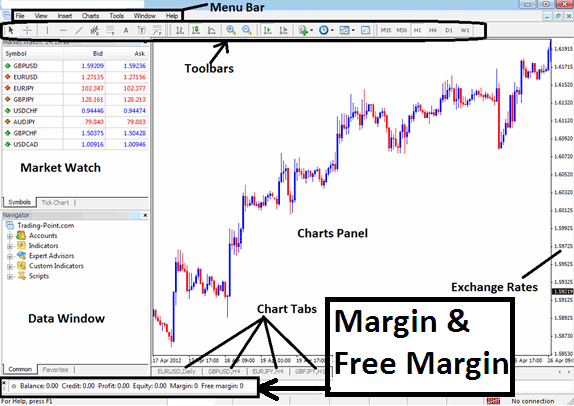Difference Between Maximum Indices Trading Leverage Set by the Broker and Used Indices Trading Leverage
If the set stock indices leverage is 100: 1, it means you can borrow up to 100 dollars for every dollar you have but you do not have to borrow all the 100 dollars for every dollar you have you can decide to borrow 50:1 or 20:1. In this case even though the option set 100:1 your used indices trading leverage will be the 50:1 or 20:1 that you have borrowed to make a transaction.
Example:
You have 1000 dollars (Equity)
set 100:1
Indices Trading Leverage Used = Amount used /Equity
If you buy trading lots which are equal to 100,000 dollars you will have used
= 100,000/1000
= 100:1
If you buy trading lots which are equal to 50,000 dollars you will have used
= 50,000/1000
= 50:1
If you buy trading lots which are equal to 20,000 dollars you will have used
= 20,000/1000
= 20:1
If you buy trading lots which are equal to 10,000 dollars you will have used
= 10,000/1000
= 10:1
In these three cases you can see that even though the set is 100:1
The used is 100:1, 50:1, 20:1 and 10:1 depending on the size of lots traded.
So Why not Just Choose 10:1 option as the Maximum Indices Trading Leverage? Because to keep within the proper risk management rules it is even recommended that investors use less than this?
This question may seem straight forward but it's not, because when you trade you use borrowed money known A.K.A. Indices Trading Leverage. When you borrow capital from anyone or a bank you must maintain a security or collateral to acquire a loan, even if the security is based on monthly deduction from your salary, the same thing with Indices Trading.
In indices trading the security is known as margin. This is the capital you deposit with your broker.
This is calculated in real time as you trade. To keep your borrowed money you must maintain what is known as the required capital (your deposit).
Now if Your Indices Trading Leverage is 100:1
When trading if you have $1,000 and use option 100:1 and buy 1 standard lot for $100,000 your margin on this transaction is the $1000 dollars in your account, this is the money that you will lose is your open transaction goes against you the other $99,000 that is borrowed, they will close the open indices trading transactions automatically once your $1,000 has been taken by the stock indices trading market.
But this is if your indices broker has set 0% Indices Trading Margin Requirement before closing your stock indices trades automatically.
For 20% requirement before closing your stock indices trades automatically, then your transactions will be closed once your balance gets to $200
For 50% requirement of this level before closing your stock indices trades automatically, then your transactions will be closed once your balance gets to $500
If they set 100% requirement of this level before closing your open positions automatically, then your trade will be closed once your balance gets to $1,000: Meaning the trade will close out as soon as you execute it because even if you pay 1 pips spread your account balance will get to $990 and the needed percentage is 100% i.e. 1,000 dollars, therefore your orders will immediately get closed.
Most brokers do not set 100% requirement, but there are those that set 100% are not suitable for you at all, choose those set 50% or 20% margin requirements, in fact, those that set at 20% are some of the best because the likely hood they close out your trade is reduced as shown in the examples above.
To know about this level which is calculated by your platform automatically - the MT4 Indices Trading Platform will display this as "Indices Trading Margin Requirement", This will be displayed as a percentage the higher the percentage the less likely your trades are to get closed.
For Example if
Using 100:1
If stock indices leverage is 100:1 and you transact 1 Mini Lot, equal to $10,000
$10,000 dollars(mini lot) divide by 100:1, your used capital is $100
Calculation:
= Capital Used * Percentage(100)
= $1,000/$100 * Percentage(100)
Indices Trading Margin Requirement = 1,000 %
Investor has 980% above the required amount
Using 10:1
If stock indices leverage is 10:1 and you transact 1 Mini Lot, equal to $10,000
$10,000 dollars(mini lot) divide by 10:1, your used capital is $1000
Calculation:
= Capital Used * Percentage(100)
= $1,000/$1000 * Percentage(100)
Indices Trading Margin Requirement = 100 %
Investor has 80% above the required amount
Because when a indices trader has a higher indices trading leverage means that they have more percentage above what is required(A.K.A. More "Free Indices Trading Margin") their open indices trading transactions are less likely to get closed. This is the reason why investors will choose the option 100:1 for their account but according to their risk management rules, they will not trade above 5:1.
These Levels are Shown on the Software Screen Shot Below as an Example:

MT4 Indices Trading Platform
